Visualyse GSO V3 – Satellite Coordination Support Software

Visualyse GSO V3 supports you at every stage of the GSO satellite coordination process - from gathering information through initial trigger analysis and into detailed analysis and bi-lateral coordination support.
The philosophy behind Visualyse GSO V3 is to make the most of the limited time that you have to get coordination done. Apply your expertise efficiently and effectively and let the software take the strain of processing the data.
A beautifully focused software tool, Visualyse GSO V3 takes all the legwork out of analysing published data and allows you to identify and concentrate on those (often only a few) cases that are critical in your GSO Satellite Coordination.
Visualyse GSO V3 interfaces directly to the Space IFIC and SRS databases and to the GIMS antenna library. It outputs textual, numerical and graphical information in formats compatible with spreadsheet and word processor applications.
As you would expect from Transfinite, the software has a range of exciting bells and whistles – for instance the ability to do regulatory priority analysis, a slot finder tool to assess how crowded the SRS is in any orbital range and a tool for simplified editing of network data within the application.
What’s the Major Problem with Satellite Coordination?
If you are like many other people you may be overwhelmed by new filings and coordination meetings and wonder how you will ever get to the small amount of vital information you need.
Now Visualyse GSO V3 provides a solution. A simple to use, seamless package take you through all stages of the process from receipt of an IFIC circular to the preparation of detailed analysis for bilateral coordination.
The mystery and legwork of processing the data are removed as Visualyse GSO V3 automatically highlights cases that need further analysis based on DT/T and coordination arc triggers. Further detailed analysis allows you to look at priority dates and system parameters.
Coordination changes from a daunting task to a manageable process giving you more time to explore solutions and deliver valuable results to your organisation.
Automatically process IFIC and SRS data
Visualyse GSO V3 effortlessly automates your interactions with space network databases published by the ITU.
Whether it’s the regular task of reviewing bi-weekly circulars published in the IFIC or an in- depth analysis of the SRS database, Visualyse GSO V3 produces immediate results and in depth analysis.
The software checks frequency overlaps, orbital separation, and priority dates. It performs coordination trigger analysis based on DT/T levels and coordination arcs and will also perform detailed interference analysis for any system you select from those identified in the database.
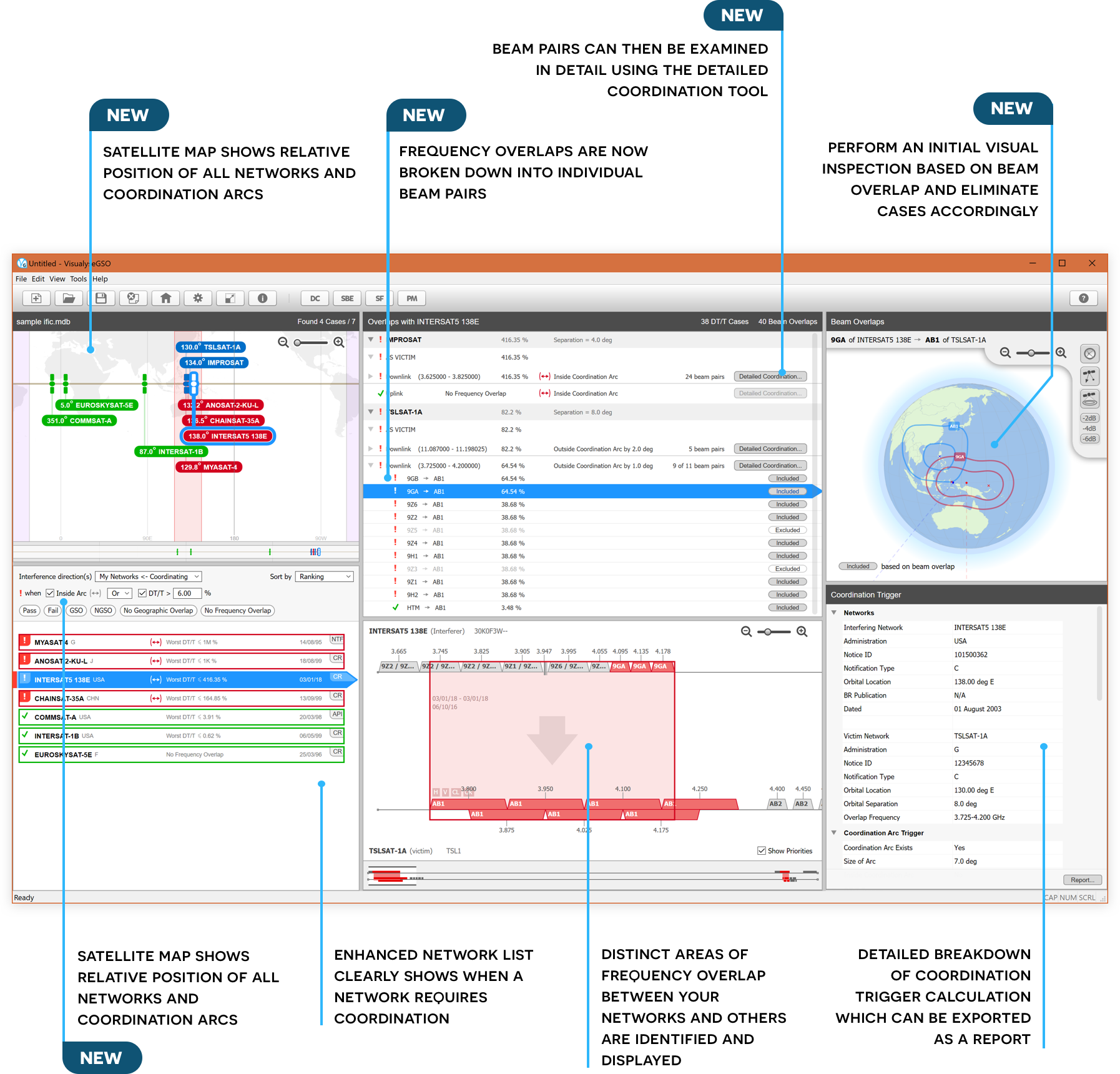
Adding your networks is simple and easy. As soon as you have added them you can begin to use them in the one-click coordination process.
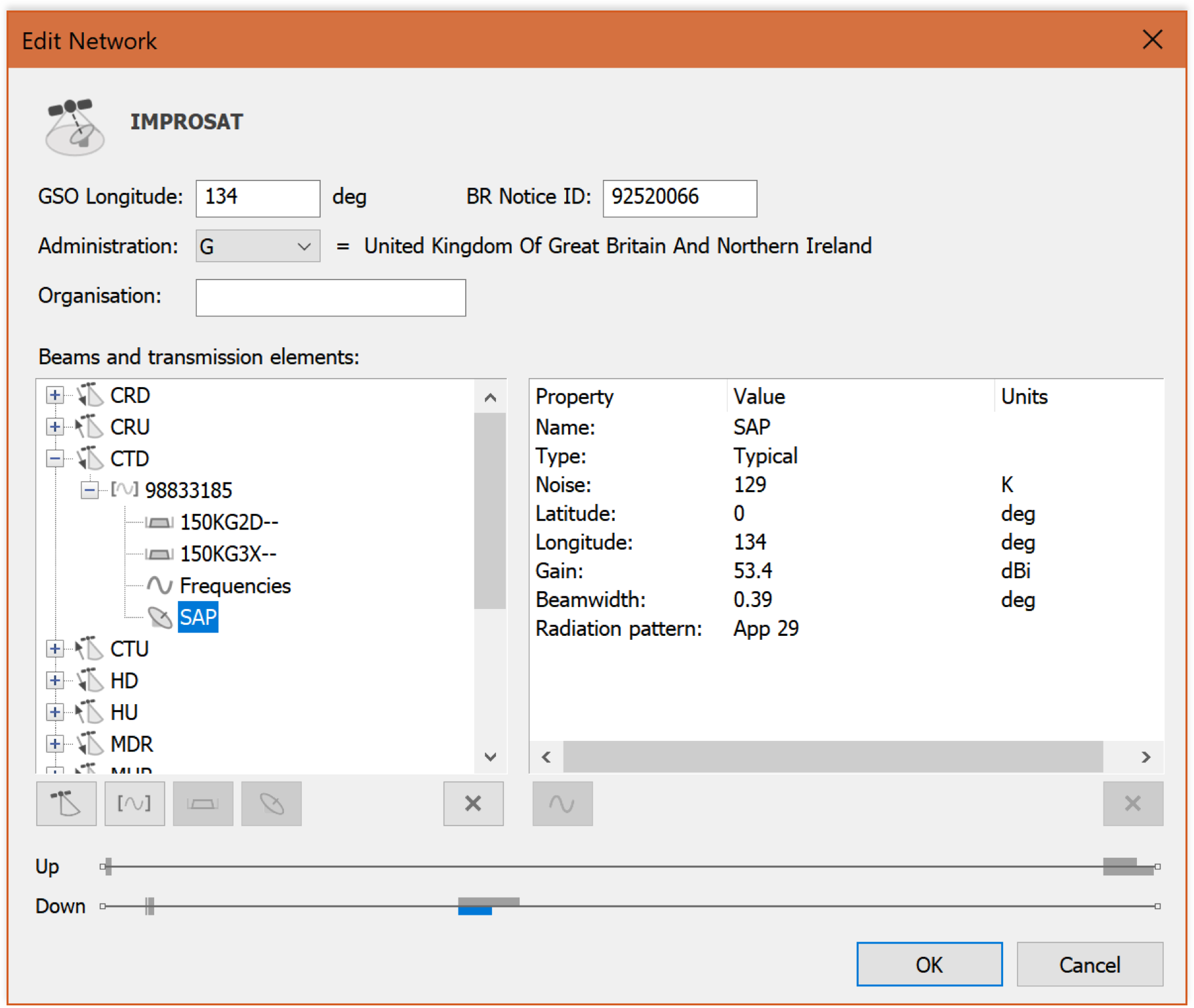
New Visual Overlap Check
In Visualyse GSO V3 you now have the ability to filter your interference cases based on beam overlap. If contours are sufficiently isolated you can choose not to include them in your detailed analysis. This can vastly reduce the number of interference cases saving you time and effort.
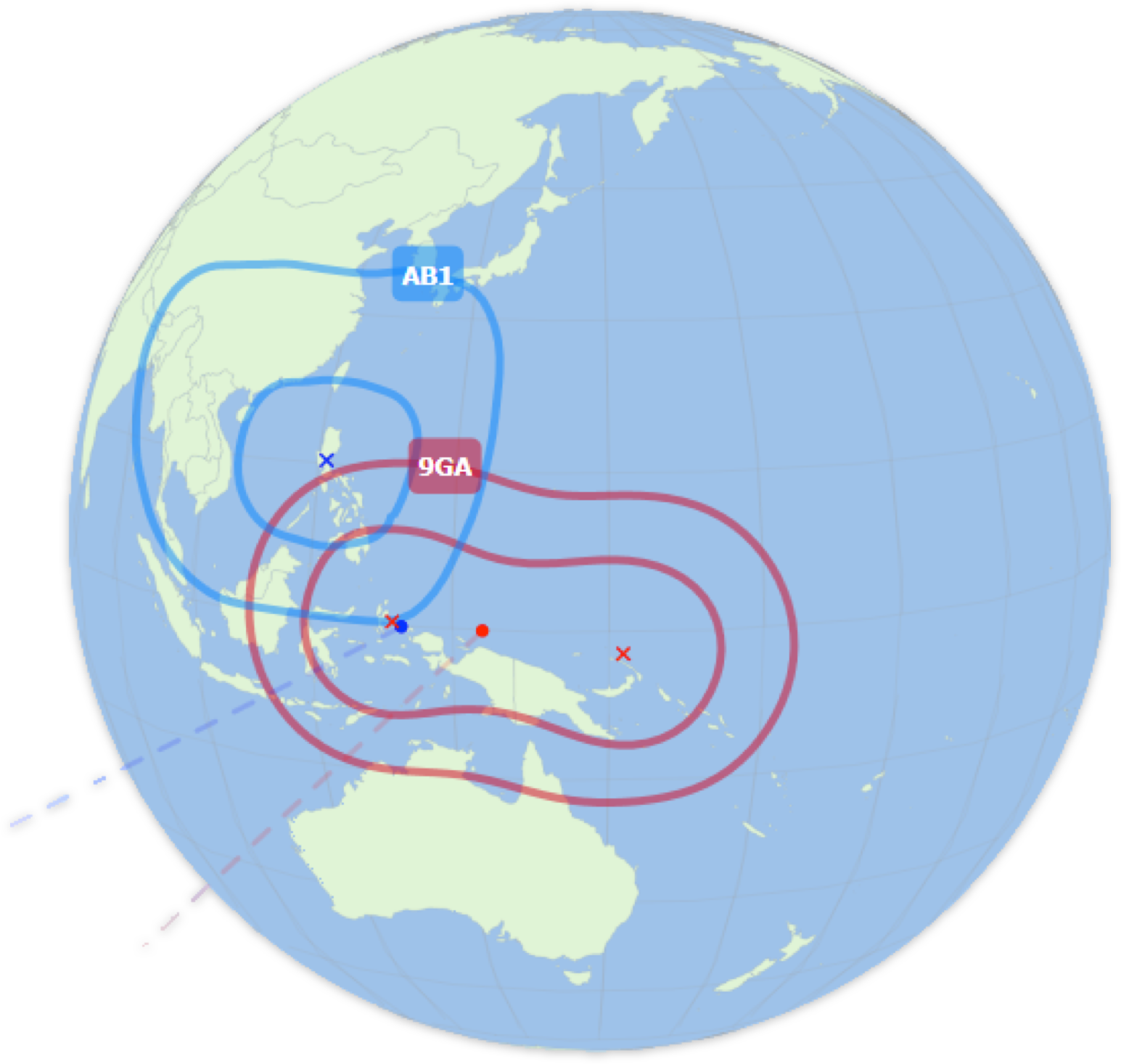
Even More Support For Bilateral Coordination
Visualyse GSO V3 hugely expands support for bilateral coordination with a complete redesign of the Detailed Coordination (DC) tool.
A brand new area analysis tool allows you to resolve interference issues on a geographical level. Network parameter changes are instantly reflected in the analysis.
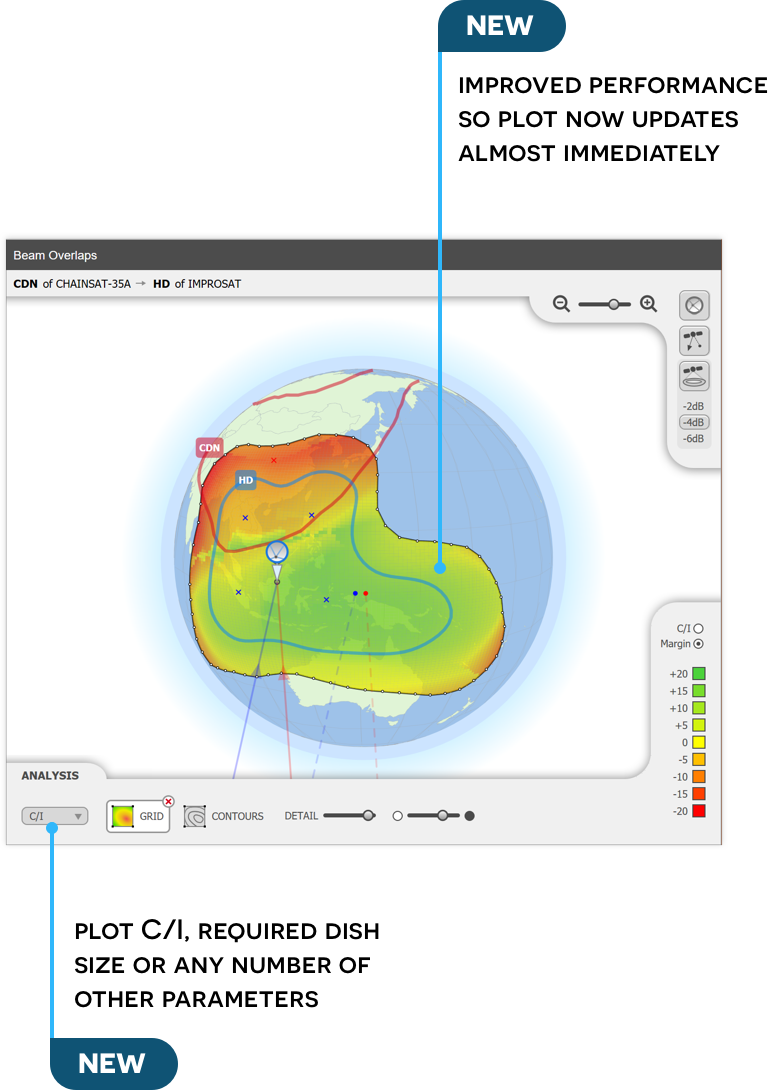
Data Dependency
A key feature in Visualyse GSO Version 3 is the dependency between network data and interference calculations.
If you change an asset then this is instantly reflected in all the interference calculations where that asset features.
You can also click on any interference calculation and all network assets are highlighted in the network editor. This makes it incredibly easy to trace calculation values back to network parameters.
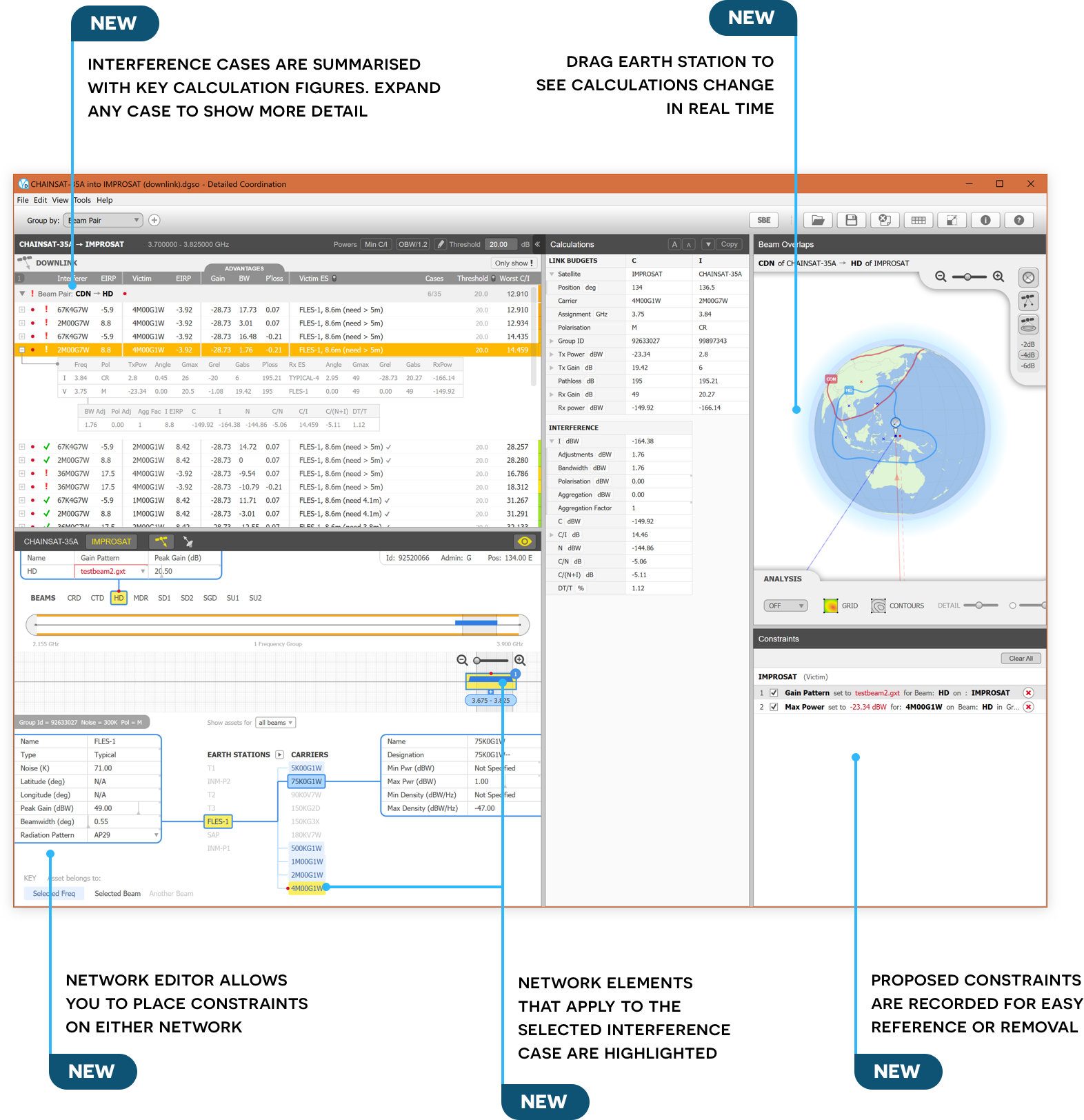

Network Editor
Visualyse GSO V3 adds a complete Network Editor. This allows you to place constraints on any parameter and see the effects on all interference cases instantly. Value sliders allow you to quickly find optimum levels for any parameter.
All changes are individually recorded in the constraints list and can be switched on or off or removed completely.
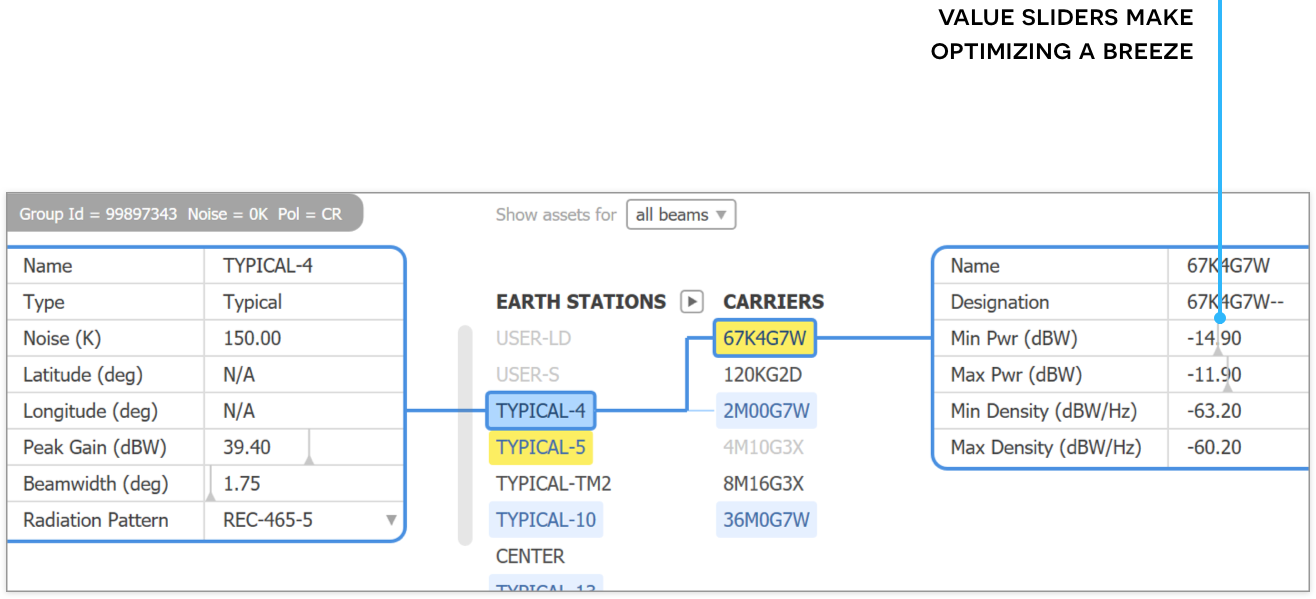
Create or Edit GIMS Beams
Visualyse GSO V3 includes a Shaped Beam Editor (SBE) tool. This allows you to create and edit beams in GIMS format. These can then be used in the Detailed Coordination (DC) tool to achieve more accurate results.
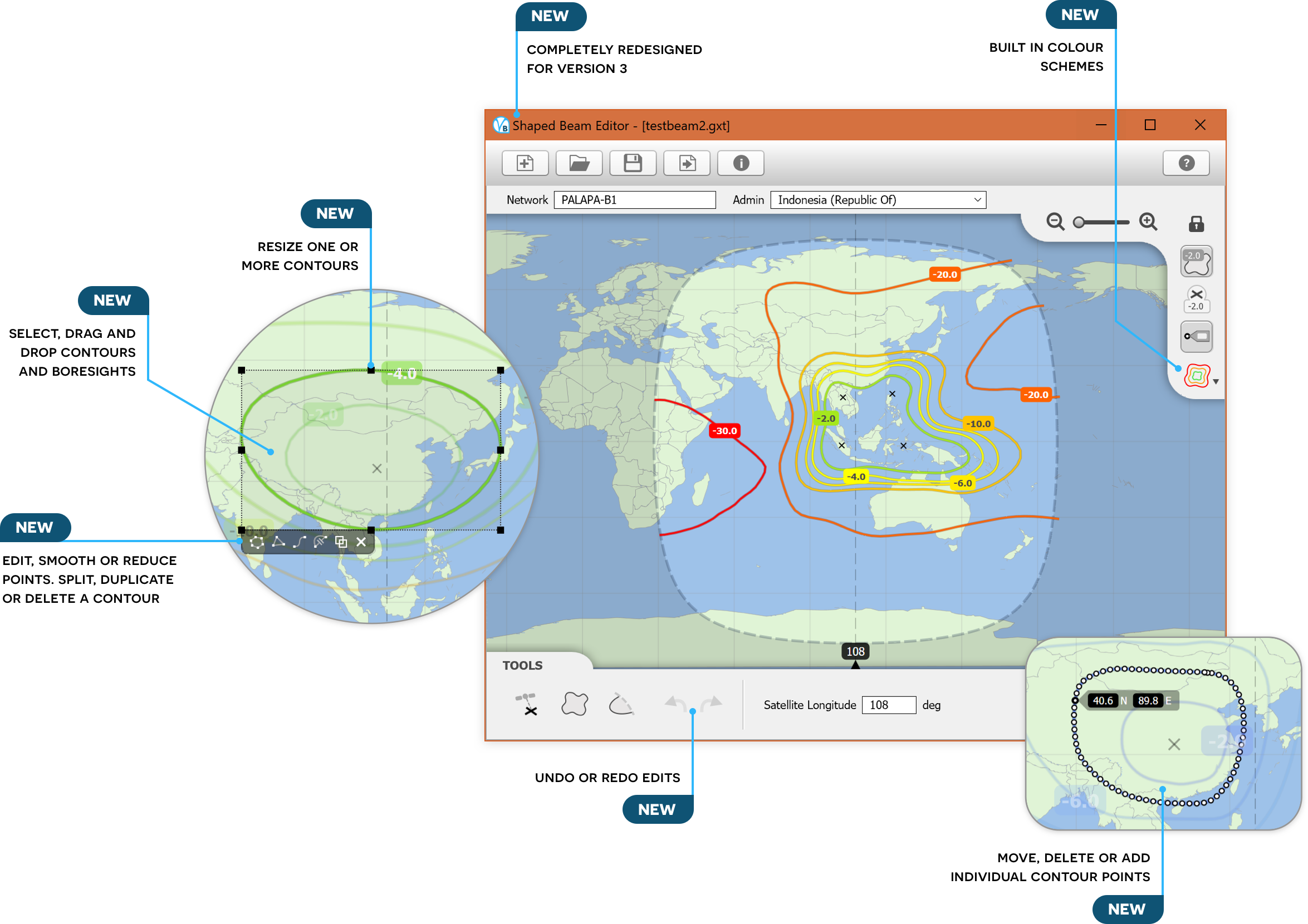
Identify Preferred Orbital Slots
Need a frequency plan and orbital location for your satellite systems? Visualyse GSO V3 includes facilities to perform constrained searches of the full SRS database that will help you identify locations where coordination can be minimised.
Ask for unused frequencies in the vicinity of your orbital location, and filter by (among other parameters) priority date, network name, notifying administration and expiry date.
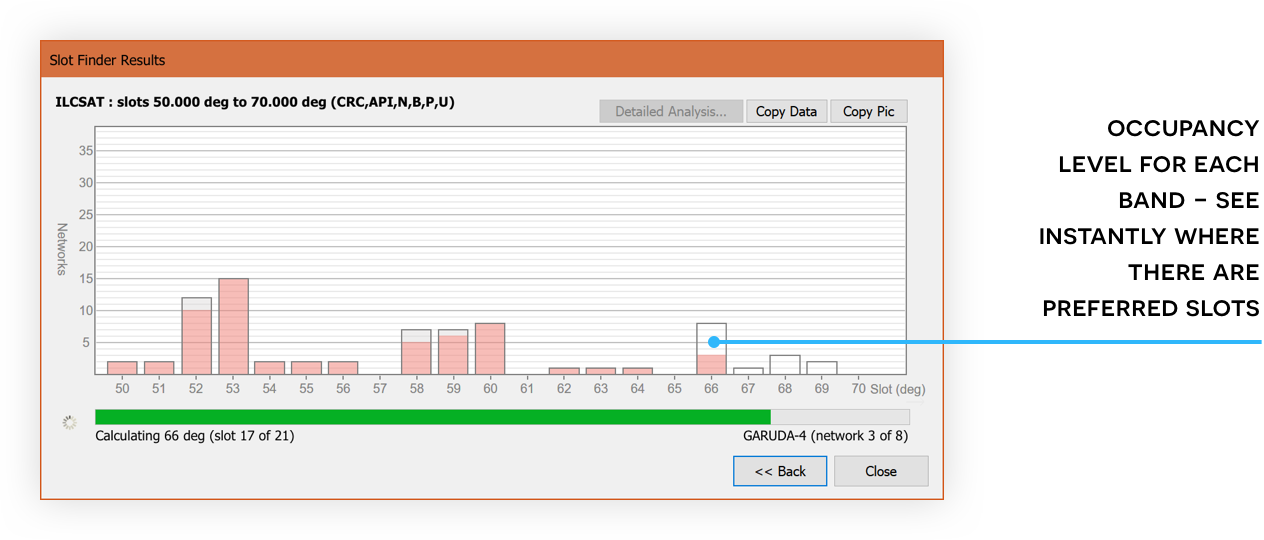
Visualyse GSO will return a graphical representation of the occupancy of each band you have selected to search. Allowing you to see instantly whether there are free slots.
Regulatory Priorities – see the whole picture with Visualyse GSO
Visualyse GSO V3 provides you with a complete view of priorities for identified frequency overlaps.
Priority dates at network and group level are extracted from the database and assets can be filtered and sorted by Notification Date or more usefully by ‘Date of Effective Protection’.
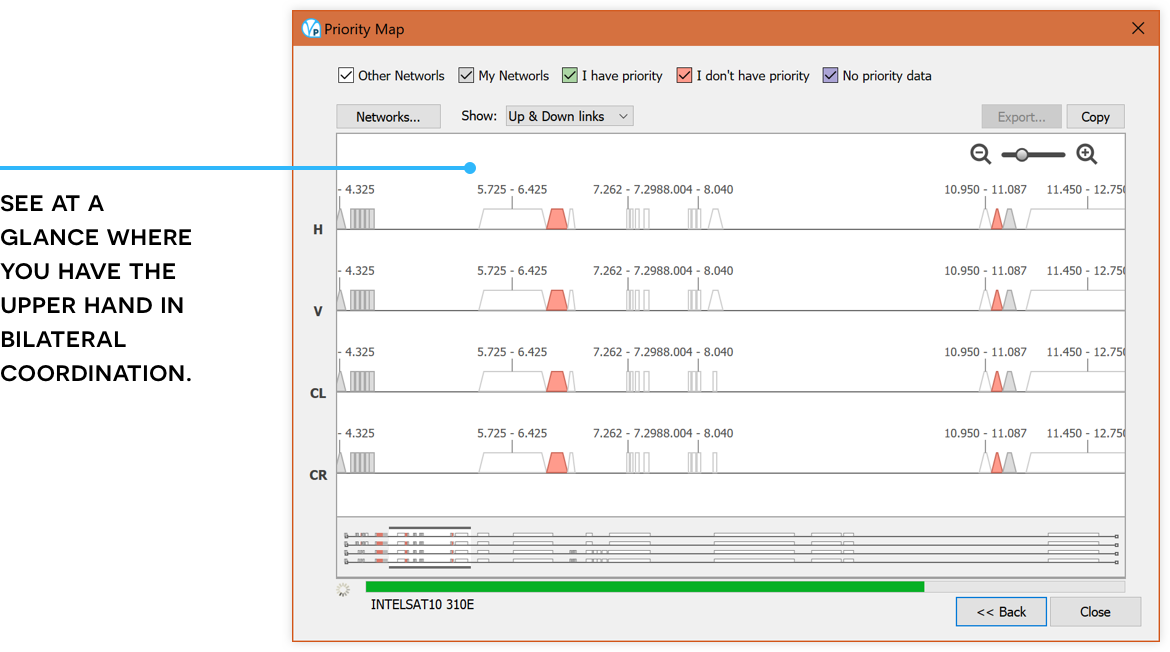
A complete view of your relative position is generated allowing you see at a glance where you have the upper hand in bilateral coordination.
Combine the processing of priority dates with coordination trigger analysis and powerful detailed interference calculations and you have a software tool that provides seamless support for the satellite coordinator.
Contact and further information
A demo version of Visualyse GSO V3 is available here.
